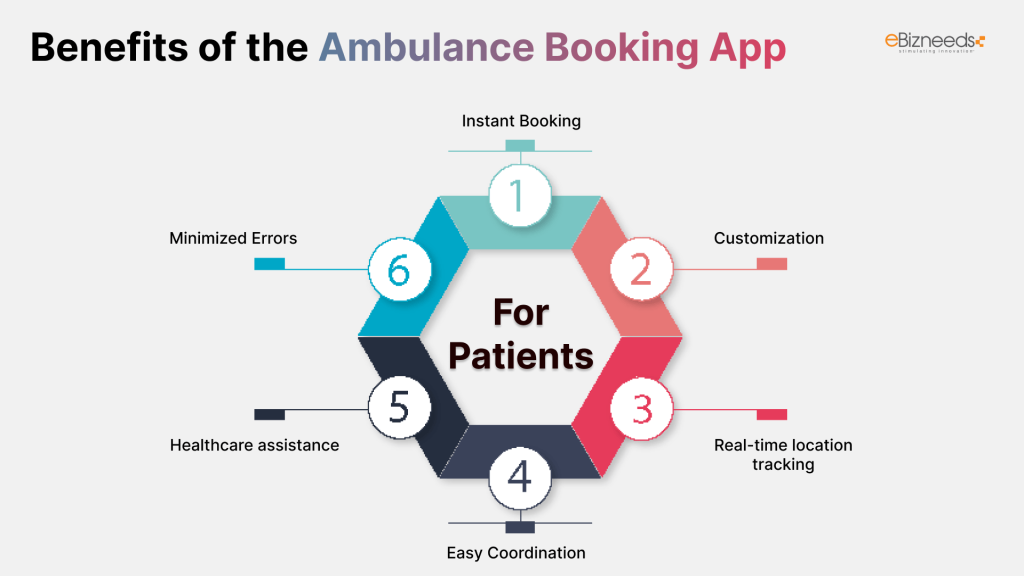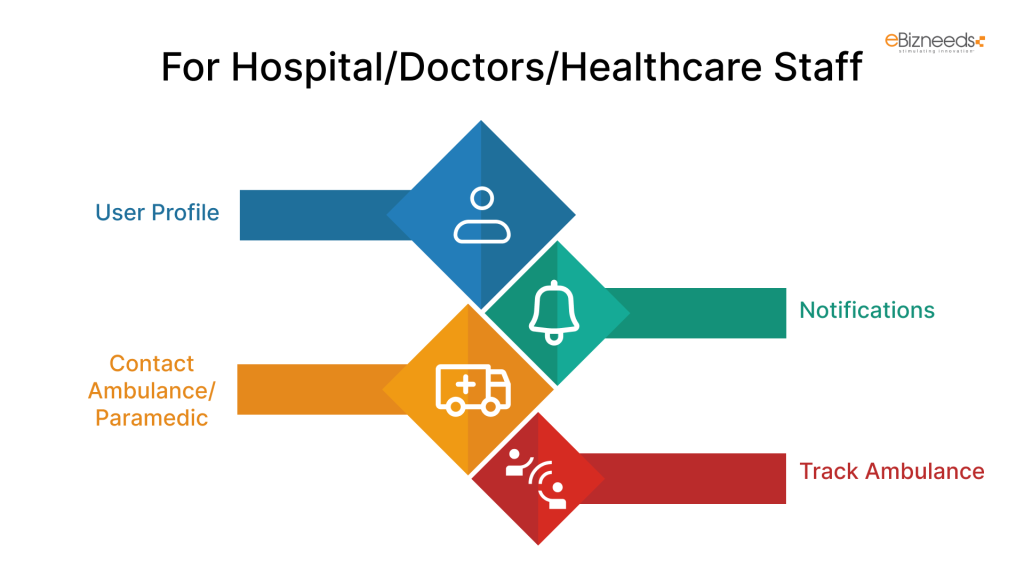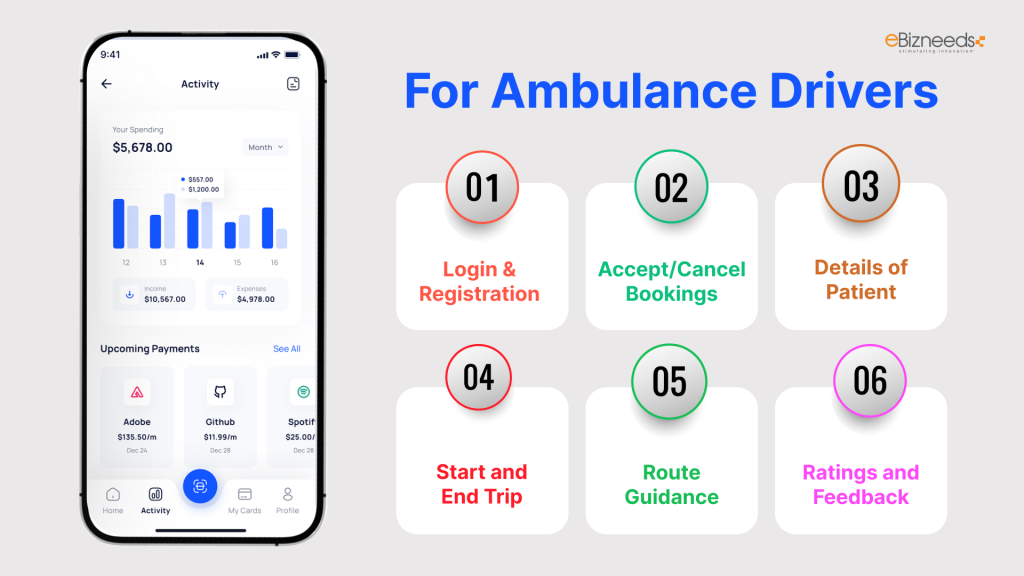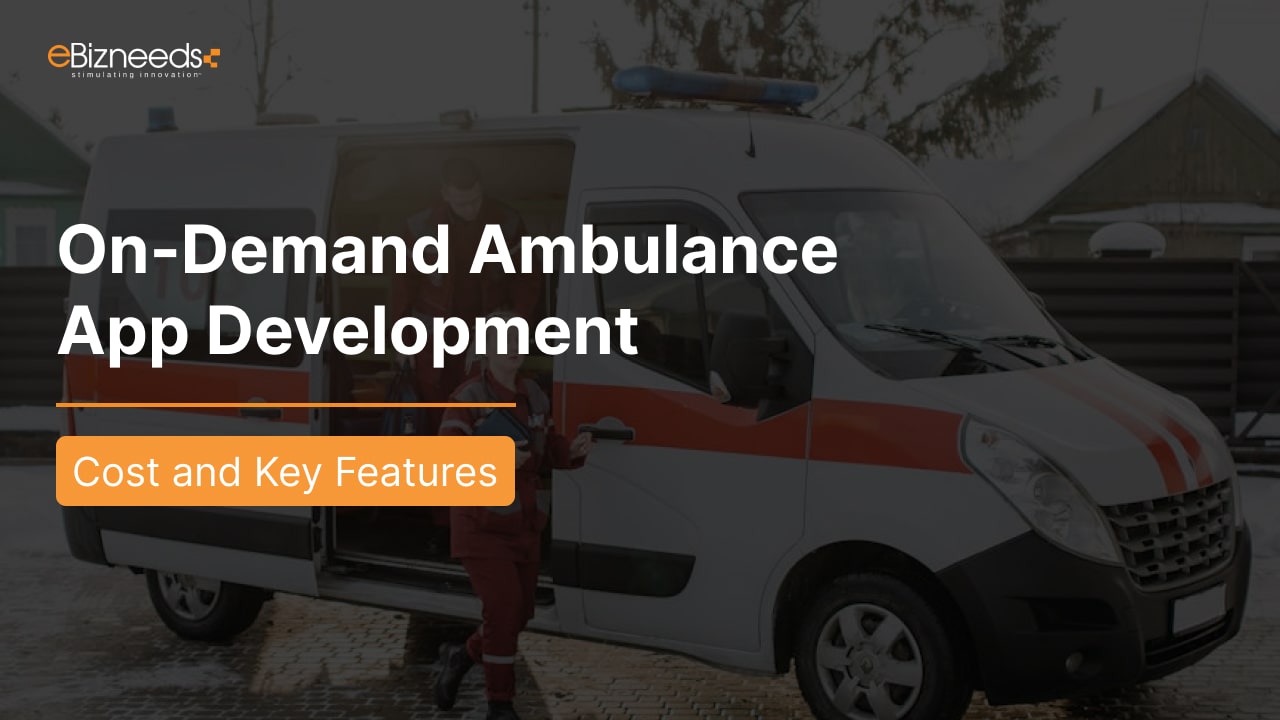Last updated on November 26th, 2024 at 10:18 am
The modern IT industry is expanding its presence to benefit many other industries, and the healthcare industry is no exception. In the last decade, we have witnessed many healthcare IT solutions coming up to facilitate faster and smoother healthcare services for patients. Be it the development of online medicine delivery apps or online medical consultations, it has always been highly beneficial for patients. Now, the on-demand ambulance booking app development is also in increasing demand as an ambulance is the first thing that comes to people’s minds in medical distress.
In emergency cases, every second is important and the traditional ambulance services have several gaps that a modern ambulance booking app development can fill.
In dire situations, people first call doctors or healthcare service providers, as calling an ambulance is not that simple. Also, the total time taken to reach a medical help or ambulance can have significant consequences. In this article, we will go through all the major aspects of on-demand ambulance mobile app development including its features, benefits, costs, tech stack, and much more. Thus, if you want to know how to develop an ambulance booking app, you have landed on the right article.
What is an Ambulance Booking App and How does it work?
An ambulance booking app allows users to book ambulances in real-time during emergencies through mobile apps. It works like any other on-demand mobile application. It serves as a link between patients in need of urgent medical attention and the nearest available ambulance service.
How does it work?
In the app, the users are required to first register through basic details. When any emergency arises, they can just open the app and book an ambulance by sharing their real-time location through GPS.
The backend system of the app will trigger the request to be received by nearby ambulance drivers. The ambulance drivers equipped with the app will get a notification along with the location and they can accept or decline as per their availability. The users also get the real-time location of the dispatched ambulance and communicate directly with the driver for seamless coordination.
After arrival, the ambulance staff will provide all the required emergency medical assistance while the app records the ambulance journey details for reference. Lastly, the users can make payments from multiple payment options. This is how an on-demand ambulance app works.
Market Statistics of Ambulance Booking Apps:
As per The Business Research report, in 2023, the global service market was valued at $70.68 billion. In 2024, as per Statista forecasts, it is expected to reach a valuation of $153 billion which is a whopping 117% CAGR in a single year. If we consider similar growth rates, we can expect a valuation of $568 billion in 2030. Thus, there are huge opportunities in the ambulance booking market.
Benefits of the Ambulance Booking App:



Ambulance booking app mainly benefits the patients and the hospital staff or healthcare providers. Here are the major benefits:
For Patients:
1. Instant Booking: Patients can easily book an ambulance in an emergency ( like an accident, heart attack, stroke, etc.) or non-emergency scenarios to ensure timely healthcare assistance.
2. Customization: Patients can choose the ambulance they want to book as per the ambulance type, basic or advanced.
3. Real-time location tracking: A GPS tracker in a modern medical emergency app will let users locate ambulances in real time. Thus, they can track the movement and expected arrival time.
4. Easy Coordination: Patients will get the contact details of the driver immediately through the app to facilitate seamless communication.
5. Healthcare assistance: The users can already share medical reports or run medicines on the app so that the healthcare staff will be ready with the treatment.
6. Minimized Errors: There can be human errors in manual ambulance dispatching and allocation which ultimately result in unexpected delays or incorrect resource allocation. Online ambulance booking apps automate these processes and reduce the chance of errors.
For Doctors and Hospital Staff:
1. Prompt Medical Care: Doctors will be able to provide immediate medical attention and save lives when the emergency cases arrive at the hospital on time.
2. Optimized Resource Allocation: Healthcare decision-makers can efficiently manage ambulance fleets during emergency situations. The on-demand ambulance apps can provide insights into the availability and location of ambulances, allowing for optimal resource allocation and reducing downtime.
Must-Have Features For the On-Demand Ambulance App:
The features can be divided for the user entity i.e. Customers/Patients features, Ambulance Driver, and Hospital Staff. Let’s go through the major features of each entity:
For Patients/Users:
a. Register and Login:
The patients would be able to easily register on the app using contact numbers or email IDs. After login, they are required to fill in their details like name, age, address, diseases, medications, and also emergency contact details.
b. Emergency Bookings:
The users should be able to book an ambulance in emergency conditions with any emergency button.
c. Schedule an Ambulance:
Users also should be able to schedule an ambulance for a particular date and time in case of non-emergency cases. They should also be able to select the type of ambulance.
d. Smart Search:
The search is most probably the first feature by which users start interacting with any app. It will allow users to find ambulances for their preferred locations or hospitals. The search results should be accurate, fast, and relevant.
e. Real-time ambulance tracking:
Built with GPS tracking, real-time ambulance tracking allows users to locate ambulance and the expected time.
In addition to the addresses, users should also be able to share their live location to the ambulance drivers.
g. Book for others:
In some cases, users may reserve an ambulance for someone they don’t know in the event of an emergency. Instead of having to personally escort the victim to the hospital, he will be able to add the contact information of someone connected to the victim with the use of this tool.
h. Secure Payment:
At last, the users have to pay for the on-demand ambulance services and for that there must be multiple ways to make payment. The payment gateway should allow users to pay by card, cash, or through e-wallets. There should be a payment history within the app for future reference as well.
For Hospital/Doctors/Healthcare Staff:



User Profile:
Just like users, hospitals or healthcare staff have to feed details into the system which can include, hospital name, address, emergency contact, doctors on board, facilities or treatments available, etc.
Notifications:
In case of emergency cases, the healthcare staff or hospital will receive notification about any incoming patients so that they are well prepared in advance.
Track Ambulance:
The hospital staff should also be able to track the ambulance location to make arrangements accordingly and avoid any delay in treatment.
Contact Ambulance/Paramedic:
This feature will allow the medical team to immediately get in touch with the ambulance or the assistance team to know the current condition of the patient.
For Ambulance Drivers:



Login & Registration:
The drivers also have to create a profile and log in to the app. They have to provide basic details like name, address, contact number, license number, etc.
Accept/Cancel Bookings:
When the driver receives a request from the patient’s end, he can accept or reject it on a subjective basis. All rejections should be supported by proper evidence.
Details of Patient:
After acceptance of the booking, the driver will also get access to the limited medical history and details of the patient. The driver will know about the pick-up spot, contact details, alternate number, emergency contact, etc.
Start and End Trip:
The app must allow the drivers to start and end the trip which will automatically update the availability status of the ambulance.
Route Guidance:
AI-supported route guidance will help ambulance drivers opt for routes with minimum traffic or the shortest distance so that they can save every precious second and reach the spot in the least time.
Ratings and Feedback:
The users will provide ratings or feedback to the ambulance drivers and the driver will be able to see them for improvisation in the service.
Admin Panel Features:
Admin Profile:
The admin team should also be able to log in to the app seamlessly. They would also be able to change their passwords, whenever required. It is also important to verify the identity and track the activity of each user.
Dashboard:
The dashboard will allow admins to have a glance at the running operations and manage operations.
Admin Team User Management:
The roles and positions of various user groups within the admin team should be taken into consideration when allocating access to the various app components. The same applies to rights like View, Create, Edit, and Delete records.
Management of various functions and roles:
The admins have the responsibility of managing the overall app. Thus they should be able to manage the following:
1. Driver: Evaluation of performance, attendance, customer ratings, etc.
2. Ambulance Fleet: Admin will have details of every ambulance including its location, driver, number, size, etc.
3. Booking: Details of all bookings in the past, current, and future booked trips.
4. Revenue: Details of all earnings and expenditures
5. Complaints: Complaints and queries by various users of the ambulance service app



Process to Develop Ambulance App:
Here are the major steps to follow for on-demand ambulance booking app development:
1. Market Research and Planning:
Firstly, you have to identify in which market or place you want to start with. We will recommend entering a market having the maximum aged population as these are the ones who most frequently require ambulance services. You have to also check for your existing competitors in your domain.
2. Decide on Features and Functionalities:
Now you have to identify what features and functionalities you want to offer in the app. What we have mentioned in this article are standard or core features. Apart from them, you can also offer certain advanced features like video calling, live medical consultation, etc. At the initial stage, it is better to opt for MVP features, and after getting good feedback from the audience, you can roll out advanced features.
3. Choose Tech Stack:
After deciding the features, you have to now decide the tech stack you want to incorporate in your ambulance booking app development. You must select the trending and most secure technology for frontend, backend, database, and cloud infrastructure. Also, the tech stack should be able to meet the compliances and regulations of the healthcare industry.
4. Choice of Development Team:
You must hire a mobile app development company with similar prior experience and holds a good reputation in on-demand mobile app development. At Ebizneeds, we provide the best on-demand mobile app development services that meet your requirements.
5. Design and Development:
Now, the designers will start creating attractive UI screens for your ambulance booking app. As soon as the designs are ready, the developers will start working on the frontend and back-end development. Our developers ensure that the front end is captivating and the back end is robust and fast for smooth app functioning.
6. Testing:
After the development phase, testing is required to ensure there are no bugs left in the app. It also ensures that the app meets all the standards of responsiveness, security, and speed.
7. Deployment:
After the QA team gives a sign-off, the app is ready for deployment. At this step, you can select a cloud partner for hosting of the app. Make sure the cloud infrastructure is reliable, secure, and scalable.
How much does it cost to develop an on-demand ambulance app:
The cost of ambulance booking app development will depend on several factors such as features and functionalities, the complexity of the app, platform choice i.e. iOS or Android, location of the development team, etc.
Among all these factors, the location of the development team matters most in terms of cost. A mobile app development company located in North America or Eastern Europe will charge $80-$120 per hour. Conversely, you can get the same quality of development at $40-$60 per hour.
As per our estimation, the cost for developing an Android ambulance booking app will cost you around $15,000-$25,000 while the iOS version will cost you $25,000-$40,000.
Wrapping Up:
In this article, we have gone through several aspects of the on-demand ambulance booking app development. At Ebizneeds, the best mobile app development company in India, we have a vast team of designers and developers with expertise in custom mobile app development. They will understand your vision and bring it into digital reality. We also provide the best consultation for the market, features, platform, and may others aspects. Contact us now.






Naveen Khanna is the CEO of eBizneeds, a company renowned for its bespoke web and mobile app development. By delivering high-end modern solutions all over the globe, Naveen takes pleasure in sharing his rich experiences and views on emerging technological trends. He has worked in many domains, from education, entertainment, banking, manufacturing, healthcare, and real estate, sharing rich experience in delivering innovative solutions.


